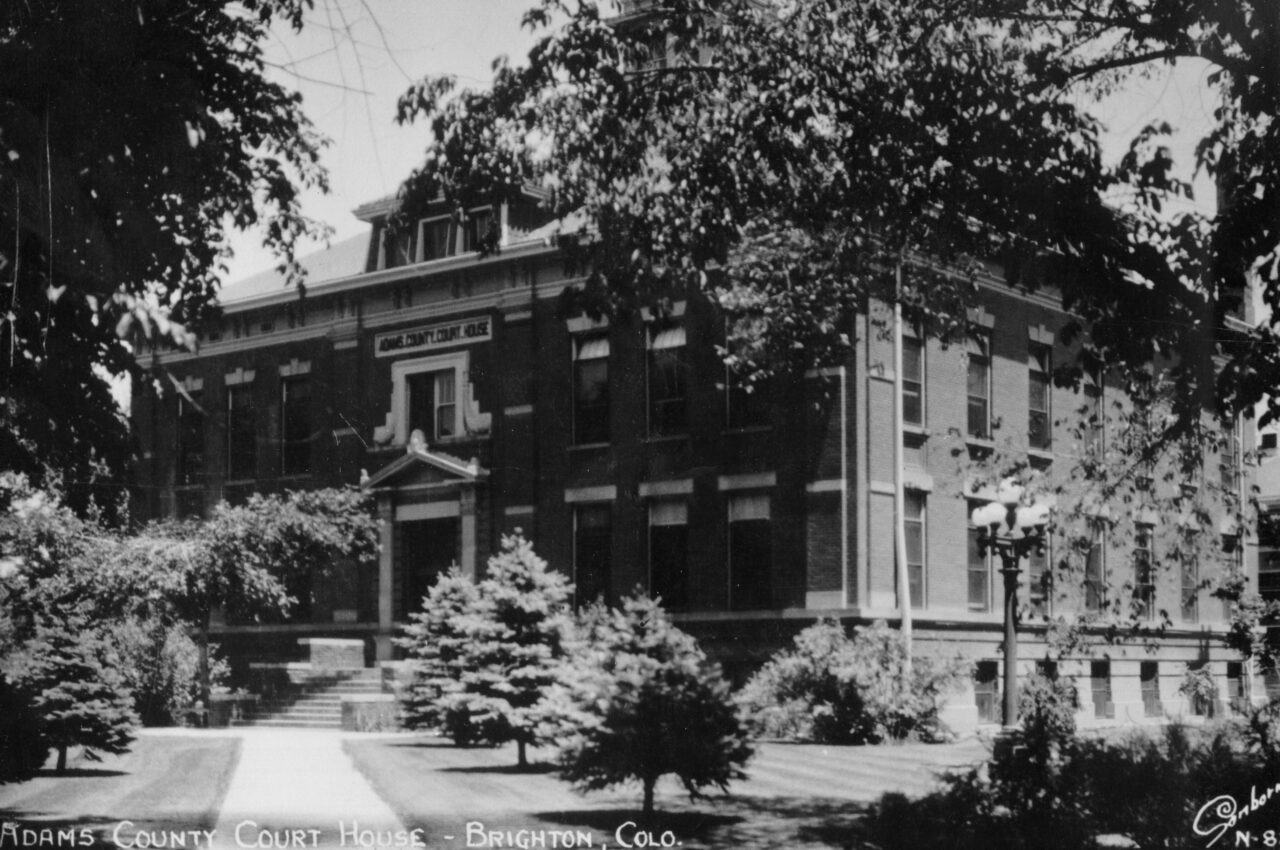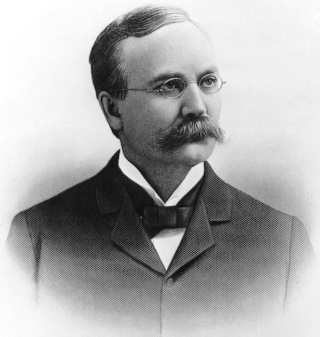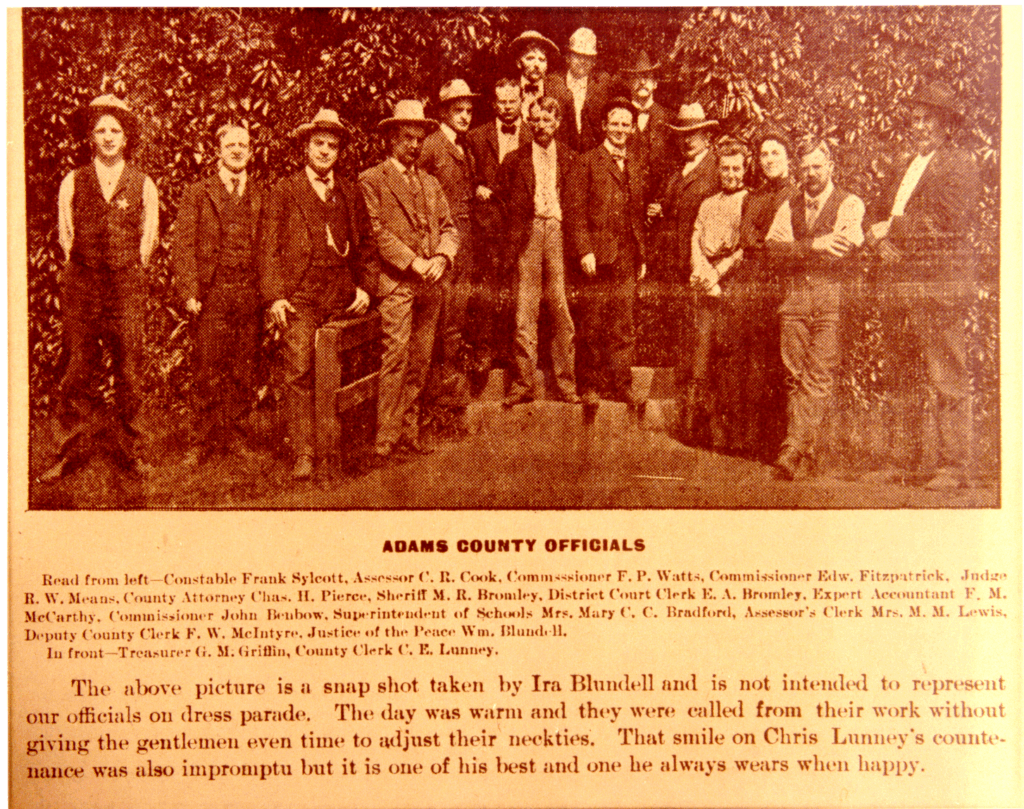History & Profile
Explore Adams County’s Rich History
With a population of about 540,000, Adams County, Colorado, covers 1,166.3 square miles, making it the 39th largest county by land in the state. It borders Arapahoe, Washington, Morgan, Weld, Jefferson, Broomfield, and Denver counties.
Founded on a rich history of agriculture and family values, Adams County is the state’s fifth-largest county by population and includes the cities of Brighton, Commerce City, Federal Heights, Northglenn, Thornton, and parts of Arvada, Bennett, Aurora, Lochbuie, and Westminster, as well as unincorporated communities like Henderson, Strasburg, and Watkins.

Creation of Adams County
In 1902, voters approved the creation of Adams County which, prior to that time, had been part of an enormous Arapahoe County. The county was named after Alva Adams, a popular former governor who was in office at the time of this election.
In an election held November 8, 1904, Brighton was chosen as the permanent county seat and, as was befitting a new and prosperous county, a new courthouse was built at 4th and Bridge Street in 1906. That building still stands as the Brighton City Hall.
The first meeting of the Adams County Board of Commissioners was held on December 4, 1902, in Brighton. The first three commissioners of Adams County were Fred P. Watts, who was a former Arapahoe County Commissioner from the Brighton district, and John Benbow and Wilson R. Smith, both appointed by then governor of Colorado, James B. Orman. Smith served as county commissioner for only one month before resigning. He was then replaced by Edward Fitzpatrick.
During this meeting, the commissioners accepted Governor Orman’s appointments for county officials: Christopher E. Lunney, county clerk; Charles R. Cook, assessor; George M. Griffin, treasurer; Martin R. Bromley, sheriff; Rice Means, county judge; and Martin I. Dowling, surveyor.


County Demographics
With rich traditions and history, Adams County offers the best of suburban and rural life – vibrant cities, quiet towns, and miles of recreation. Located in the Denver metro area, Adams County is the state’s fifth-largest county serving a population of more than 540,000 residents. Adams County is home to the cities of Brighton, Commerce City, Federal Heights, Northglenn, and Thornton; portions of Arvada, Aurora, Lochbuie, and Westminster; and the Town of Bennett. Unincorporated communities include Henderson, Strasburg, and Watkins.
Adams County Fast Facts
Yearly Census Information
Find information about our yearly census surveys.
- County Population – 527,575 people
- Persons under 5 years – 6.2%
- Persons under 18 years – 24.5%
- Persons 65 years and over – 11.3%
- Housing Units (July 2021) – 196,598
- County Population – 522,140 people
- Persons under 5 years – 6.3%
- Persons under 18 years – 25.2%
- Persons 65 years and over – 11.0%
- Housing Units (July 2021) – 191,383
- County Population – 519,572 people
- County Population – 517,421 people
- Total Residents 18 and over – 382,374
- Housing Units in Adams County – 178,519
- Adams County had the 10th highest growth rate in the State of Colorado
from 2000 to 2010 - The median age of Adams County residents is 32.4
- County Population – 441,603 people
- Unincorporated Adams County Population – 89,163
- Total Residents 18 and over – 302,382
- Housing Units in Adams County – 155,999
American Community Survey
The American Community Survey (ACS) is an ongoing statistical survey that the United States Census Bureau annually conducts. The survey gathers information previously contained only in the long form of the decennial census. The ACS data are estimates (not counts) of population and housing characteristics collected throughout the year.
In order to help communities, state governments, and federal programs, the ACS gathers information such as age; sex; race; family and relationships; income and benefits; health insurance; education; veteran status; disabilities; where you work, and how you get there; and where you live and how much you pay for essentials. The collected information is combined into statistics that are used by communities and agencies to plan investments and services.
The following reports are only a subset of the information available on the US Census Bureau’s web page.